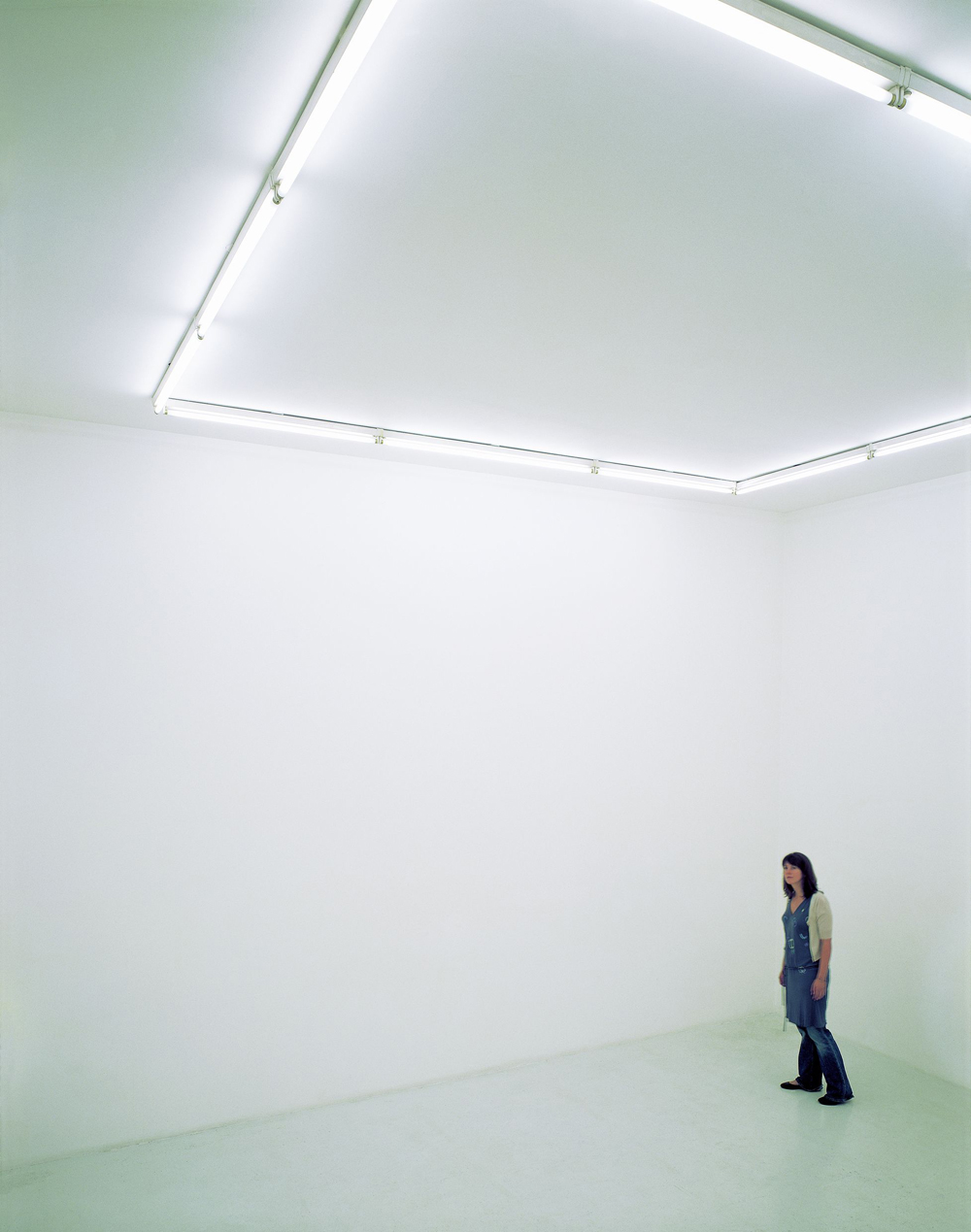Spare Me!
Sometimes no art is better than more art
Sometimes no art is better than more art

Lately, I’ve caught myself feeling relieved when I arrive at an exhibition to find the doors locked and bolted. Instead of shock waves of exclusion, I notice a weird sense of deliverance. Very interesting. Recently, on a trip to Zurich, I found Hauser & Wirth hosting a designer ‘concept store’ for the luxury clothing brand Clemens en August. No art – nor even any semi-Warholian apologia in the press release – just the gallery assistants helping you into corduroy outfits, frowning at your shoes and commenting on your unnaturally long forearms. I did briefly scoff at the embarrassment of calling one’s gallery a ‘concept store’, but quickly succumbed to hubris and joy, marking the occasion with a three-piece flannel suit.
On the same trip to Zurich, artist San Keller shared with me some of his research on shows that empty rooms or shut doors for precise, strategic reasons. These ranged from the iconic (Yves Klein’s 1958 exhibition ‘The Void’) to newer classics (Santiago Sierra’s Spanish pavilion at the 2003 Venice Biennale) via pranksterish, atmospheric or institutionally critical approaches, such as spaces filled only with Gabriel Orozco’s yoghurt pot lids (Yogurt Caps, 1994) or a Tony Oursler doll dangling in a faraway corner (The Watching, 1992). Of course, formalist affectation is a genuine threat here. (Is it empty? Or ‘Empty’? As opposed to EMPTY!! Or empty?) It’s not easy to avoid less-is-more kitsch without veering towards gastro-minimalism. If you’re going for the soothing whites of a branch of Wagamama, you may as well serve the duck gyoza along with it.
I was thinking of another, more dramatic example of bait and switch: the re-education efforts in postwar Berlin, when the allies would surprise German moviegoers with ad hoc reprogramming experiments. Audiences would settle down expecting Gone With the Wind (1939), only to be shown Charlie Chaplin’s Great Dictator (1940). I doubt anyone was impressed. Pedagogical condescension needs to be gentle in touch and gracefully staged. I myself went to see the new James Bond film, Quantum of Solace (2008), the other day. If I had been offered Guy Debord’s Society of the Spectacle (1973), I would have been outraged. Re-education works better when you don’t notice you’re being re-educated, and when the element of pedagogical surprise is subtle and pernicious.
As for the new Bond film, the good news is that 007 is out to rescue Bolivian president Evo Morales, that tubby social democrat in striped Alpaca wool. The bad news is, less dialogue, more ‘Pow! Pow! Pow!’ and highway chases with lorries and police cars popping up and down like hot popcorn. That’s the thing with Bond: 007 is less bait and switch than a case of modest variations within a brutally self-same pattern. There is, of course, comfort and pleasure in modest variation, and the critical tracings thereof. That’s the reason, for example, why the art review is still the most fascinating engine of artistic circulation. Me, I like to heighten the redundancy of critical tracings of modest variations by only reading reviews of shows I’ve already seen. Not only can you measure your opinion against that of the reviewer, you also get the most benefit out of the effort you made to see a show. A higher return on your investment.
Ruinart
So, it’s not curatorial novelty that’s at stake – I’m not going to trick myself into thinking avant-garde innovation is an option within the scenographic tautology of the art show. Why would there be anything wrong with repetition, when the loop can be a friend to difference, not its dialectical opposite? It’s in recurrence that newness can be noticed. Yet, I cannot help but wonder about that sense of relief I experience when I find a show is shut. Perhaps it has something to do with how many agendas the idea of an ‘art exhibition’ can accommodate: so many wildly different motivations winding up with such similar results in atmosphere and format, from conceptual appetites to monetary gain to cultural capital to sexual networking to activism. How fascinating it is that these diverse agendas can all agree on the same structure for a Well Installed Show – even in the national pavilions at the Venice Biennale. Perhaps a pavilion should be an unapologetically patriotic showcase, not a Well Installed Show that is out to sex up, rationalize, upgrade and thereby surreptitiously strengthen a nationalist agenda. Maybe a national pavilion should look national in precisely the same way a Hauser & Wirth gallery should look like a ‘concept store’.
An increasing number of art professionals are complaining of ‘exhibition fatigue’ (Vasif Kortun) and demonstrating a growing impatience with ‘art exhibitions that look like art exhibitions’ (Anton Vidokle paraphrasing Andy Warhol). Irit Rogoff, for her part, has eloquently described the utter exhaustion that besets you the moment you see the list of artists participating in a group show. What if all shows and venues were shut down for a little while? A one-month moratorium? A one-year vacation? It might come across as curatorial moping, but no harm done. Think about it. It’s re-educational, it’s poignant, it might even be fun. We’ll do ‘concept stores’ and duck gyoza.
























